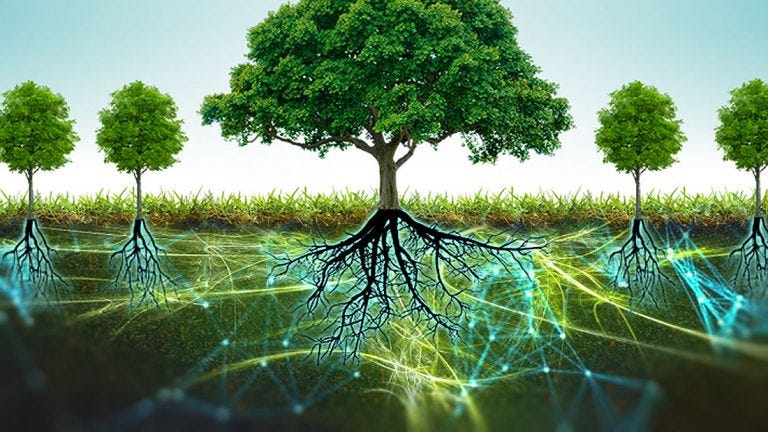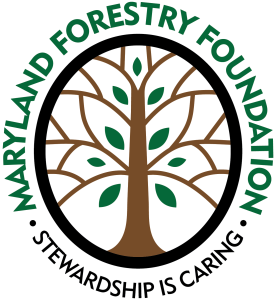
Did you know that trees communicate with one another? Through a system of underground “information highways” conducted through fungal filaments, trees can send signals to one another, and even identify relationships with one another! In a well-connected forest, each day is like an extended family reunion.
Similarly to humans, trees which have been around the longest have formed the most numerous and meaningful connections with their peers. These old and well-connected trees are known as “Mother Trees” and are an aspect of mature forests which humans are only just beginning to understand (Beiler, 2010).
Mother Trees use the fungal network to do more than just chat with their kin, however. Mother Trees can send excess nutrients, such as carbon and nitrogen to nearby seedlings (Teste et. al, 2009). These seedling “children” may not otherwise survive due to the heavy competition for light and other nutrients. By subsisting off Mother Trees, these young trees can get by until a space in the canopy opens, and they can grow to their full potential. This system is so refined that Mother Trees can identify which nearby seedlings are genetically related to them and have been observed giving them preferential treatment in this nutrient-sharing arrangement (Pickles et. al, 2017).
If you find yourself wondering why trees would go to such lengths to develop these connections, we must only look at our own selves in the mirror. Just as a group of humans is more productive working together than alone, trees derive numerous benefits from growing together and helping each other out. Take for example, a strong storm. A tree which stands far above the rest of its kin is subject to more winds and is subject to more environmental stress. Conversely, the trees which share their nutrients will be able to support each other through a hypothetical storm, and other environmental stresses (Wohlleben, 2016).
Next time you find yourself among trees, take a moment to listen. You may just hear a party beneath your feet.
References:
Beiler, K. J., Durall, D. M., Simard, S. W., Maxwell, S. A., & Kretzer, A. M. (2010). Architecture of the wood‐wide web: Rhizopogon spp. genets link multiple Douglas‐fir cohorts. New Phytologist, 185(2), 543-553.
Pickles, B. J., Wilhelm, R., Asay, A. K., Hahn, A. S., Simard, S. W., & Mohn, W. W. (2017). Transfer of 13C between paired Douglas‐fir seedlings reveals plant kinship effects and uptake of exudates by ectomycorrhizas. New Phytologist, 214(1), 400-411.
Teste, F. P., Simard, S. W., Durall, D. M., Guy, R. D., Jones, M. D., & Schoonmaker, A. L. (2009). Access to mycorrhizal networks and roots of trees: importance for seedling survival and resource transfer. Ecology, 90(10), 2808-2822.
Wohlleben, P. (2016). The Hidden Life of Trees. [United States], Greystone Books.
Image Source: https://medium.com/@Spiritwhisper/the-internet-of-trees-b1ad9ca7c378
